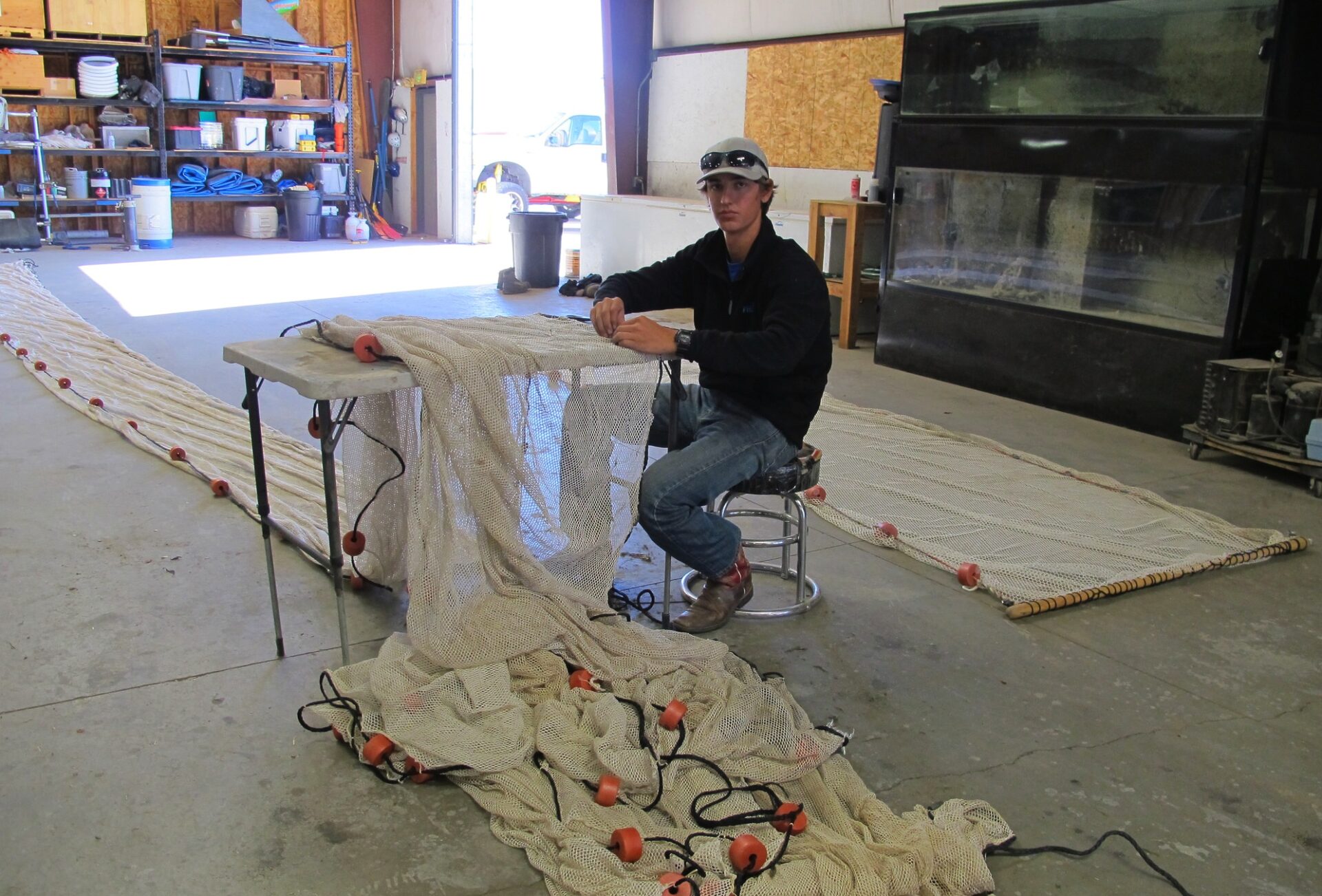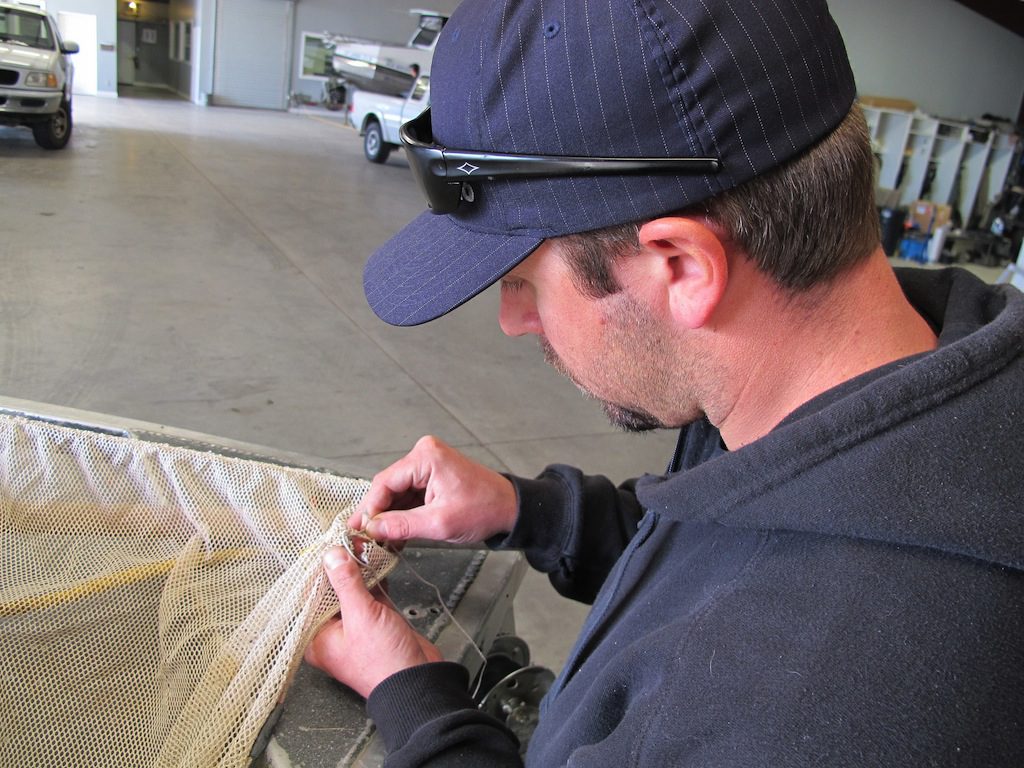Friday June 26, 2015

Sometimes the advantages of seine nets can prove to be a bit of a disadvantage. Due to their light weight and portability, seine nets can be an efficient tool for catching fish in low-water areas that aren’t suitable for other traditional sampling methods. As we mentioned in a previous blog post (see An in-seine experience), seines include a lead line, or a line of weights distributed along the bottom of the net that keeps it close to the substrate as the seine is pulled through the sampling area. However, this design can lead to unintentionally catching cobbles and other common debris found along the riverbed, which can cause a bit of damage.

The technicians in these photos are focused on repairing seines damaged by woody debris snagged during sampling events. When not busy building custom goliath PIT tag antennas or prototype fish identification systems, our FABLAB technicians may find themselves practicing their sewing techniques. Snagged nets are part of the business, since gill nets, kick nets, or other standard sampling tools can get caught on debris as well. So while our FABLAB crew may not quite be ready to drop their tools and pick up needlepoint, their sewing skills often get put to more use than reattaching a button that was lost in the wash.
